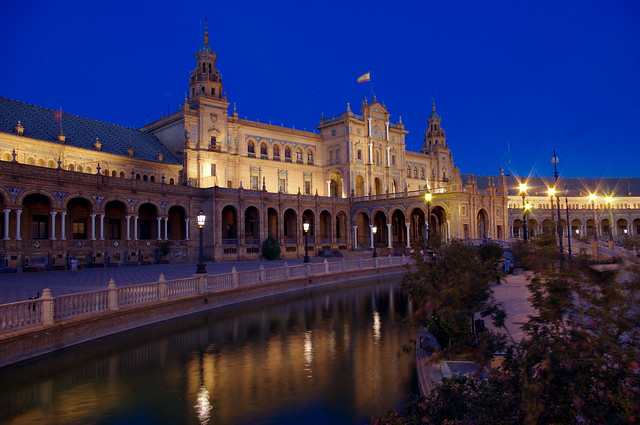Traveling to Europe has perhaps never been cheaper than in the last two years. Thanks in part to the plummeting euro and the widening recognition of the Schengen visa, it is now a lot easier to move across the various European countries using just one currency (for the most part) and one visa.
I thought I’d share some simple tips on cheap travel around Europe. I learned these money-saving measures during my visits to the continent during the past few years. To be perfectly frank, none of them are in any way ground breaking. But they are effective, at least for me. Hopefully, to you as well.
#1 – The Schengen Visa
If you hold a passport that doesn’t require you to obtain a Schengen Visa, it’s better to skip this. But for the rest — fundamentally, the Schengen Visa is supposed to grant the holder entry to 26 member countries in Europe. Thankfully these days, the same visa has been embraced by several other European countries outside the Schengen Area. In fact, a recent count I made shows that one can enter almost all countries in Europe with this visa, which makes it all the more convenient to travel around the continent and reduce the need to apply for different visas.
Which Non-Schengen European countries can I enter with the Schengen visa?
Albania – follows the validity of the Schengen Visa
Bosnia and Hercegovina – 7 days
Bulgaria – follows the validity of the Schengen Visa
Croatia – follows the validity of the Schengen Visa
Macedonia – follows the validity of the Schengen Visa
Montenegro – 7 days
Romania – 5 days
With these inclusions, the only remaining European countries that can’t be visited with a Schengen visa are the ex-Soviet ones like Russia, Ukraine, Belarus and Moldova. The only Non-Ex USSR European country where a Schengen visa still won’t work is Serbia.
#2 – Europe is not just about Paris and London!
cities like prague is as european as europe goes… at around 3/4 the cost of London
There is perhaps no more cliched element of an Eurotrip than an image of the Eiffel Tower. While Paris is undeniably a marvelous city, it is a shame that those on a budget 2 week or month-long trip across the continent don’t consider the more cost-effective destinations which are just as majestic. Cities such as Prague, Budapest and Krakow are as stunning as Paris, London and Rome. If budget is your #1 constraint in visiting the continent, do consider these cities.
Depending on your interests, I have some more suggestions below – less expensive places but quintessentially European just the same.
Also, if you fancy Venice, but find the massive crowds a little bit too overwhelming, do consider the town of Rovinj in Croatia which has similar Venetian architecture sans the canals. Or for the canal and gondola experience, head down to Aveiro in Portugal.
#3 – Guesthouses, hostels and even couchsurfing – not only are they cheaper but can have better locations as well
the walled city of dubrovnik in croatia, where not a single chain hotel could set up shop… but guesthouses abound, with homeowners renting out their rooms to tourists
As Europe is one busy continent for tourism, it’s pretty easy to find lodging options at every price point. In most cities, there are bound to be clean, reliable and even luxurious types of hostels. From about Eur 15 per night in Western Europe and slightly less in Eastern Europe, staying in a hostel can be a very convenient choice, as many such properties can situate themselves within historic towns while larger hotels need to be farther away, thus also saving you some transportation costs. A case in point is the fantastic walled city of Dubrovnik in Croatia, which is a UNESCO World Heritage Site. Due to building restrictions, the nearest chain hotel is about a 15 minute walk away, in the newer sections of the city. However, many enterprising residents of the walled city rent out their rooms to tourists. Not only are prices more reasonable, the location is also a lot better.
If privacy is an issue, consider staying in a guesthouse. For a few more euros compared to a hostel, many homeowners rent out their rooms to tourists. These start from about Eur 25 and can go higher, depending on the location. If you’re traveling as a couple or as a group, staying in a guesthouse can turn out to be as economical as a hostel.
To not have to pay for lodging, check out Couchsuring, a concept that is not particularly limited to Europe. It can be a good way to meet and befriend locals as well, but it’s important to choose carefully.
#4 – Free things you can do in and around Europe
the plaza de españa in seville, spain… you don’t need to pay a single cent to come and see this beauty
The great thing about traveling around Europe is that you don’t need to look too hard to find something interesting. In almost every city, town and village, there’s bound to be a palace, castle or fort; a majestic public square with buildings done up in baroque / gothic / neoclassical / rococo / art deco style and not to mention a night life / party district. Even the so-called Europe essentials can be done for free. Take the Eiffel Tower as an example. You’ll need to pay a ludicrous amount to go up (where the view is not even the best that you can get of Paris, but that’s another story), but appreciating it from the grass fields below is totally free.
Also consider joining the “free tours” which can be found in most major cities in Europe. As these guides get paid only with tips, they’re usually motivated (very much so, I might add) to make the tours a lot more fun! A personal favorite of mine is Sandemans New Europe which offers free tours across many cities across the continent. These tours are also a good way to learn the history of the tourist attractions around the city, lest they become just another background for your next selfie.
#5 – Menu of the day or even cooking your own meals
croquetas… a mainstay of the daily specials found all over spain
There’s nothing like the ubiquitous menu of the day that one gets to see all over Europe. It’s always written based on the country’s lingua franca – from the menu del dia in Spain to the tageskarte in Austria and Germany, they essentially spell value. For those with big appetites such as myself, the menu of the day is usually a good budget option if you’re not willing to cook your own meals. For about EUR 7 to 10 in Western Europe and about EUR 5 – 8 in Central and Eastern Europe, these usually consist of a starter, a main course and dessert or a drink.
For those with smaller appetites, you can always turn to the shawarma / kebab stands which seem to proliferate the continent. Or just grab a sandwich from the deli. This will set you back by about Eur 3.50 to 5 per meal.
An even cheaper, but not as convenient alternative, would be to buy from the supermarkets and do your own cooking in the hostel or apartment. Food items in Europe are generally competitively priced, which can result to huge savings for those who don’t mind cooking their own food.
So how much will you realistically end up spending on a daily basis if you adhere to these 5 basic money-saving tips?
Food – EUR 16.50 ( assuming 2.5 meals per day costing EUR 7 each; breakfast considered as half a meal)
Transport – EUR 3.00 (assuming 2 public transport rides per day of EUR 1.50 each)
Lodging – EUR 15.00 (assuming a normal-priced hostel in the city center)
Attractions – EUR 5.00 (assuming 1 paid attraction, with the rest being free attractions)
Total: EUR 39.50
EUR 39.50 or about USD 54 ain’t too shabby. Of course you can bring this down even more by cooking your own meals, in which case you may only end up spending EUR 30 or USD 41 per day!











I agree Europe doesn’t require you to really try hard to find something interesting. Every nook and corner is pretty and picturesque. Nice tips. Yes, a tourist should look beyond London and Paris.
Glad you liked Lisbon as much as I do! Btw, hopped over to you blog and I love your photo of Dubrovnik at night. 🙂
Thanks for visiting 😉
Wow! What a great breakdown. Nice one. We hope to travel Europe more in the next couple of years so it’s great to know we can do it on a reasonable budget.
Cheers and happy travels 🙂
Hi Nick & Dariece! Glad you found the post helpful. Looking forward to read about the next chapter of your travels after all those exotic countries 😀
Thanks for visiting!
Hey Nick!! Travel in Europe is always full with fun and there are many travelling destinations at there. If you are looking to travel at there and you want to get cheap packages like cheap hotels as well as flights then many choices that may be available for you.
Glad I found this blog. Very helpful. I can start now planning our Europe travel plan for Jan 2015. Just in time for our 20th anniversary. 🙂
hi fatima! thanks for your comments. hope you enjoy your trip next year!
These are great tips! Hope I just have the money to travel to Europe 🙁
Excellent tips. I’ll be in Norway for the first time next week and will definitely have to utilize some of those. I’ve just started pricing out the trip (no minute like the last minute) and it’s stressing me out a bit.
I’ve been seeing your post in instagram. Looks like you’re in Denmark at the moment? Personally liked Copenhagen!
Hey Bino! I was enlightened by the insight , Does anyone know if I can get access to a fillable a form version to work with ?